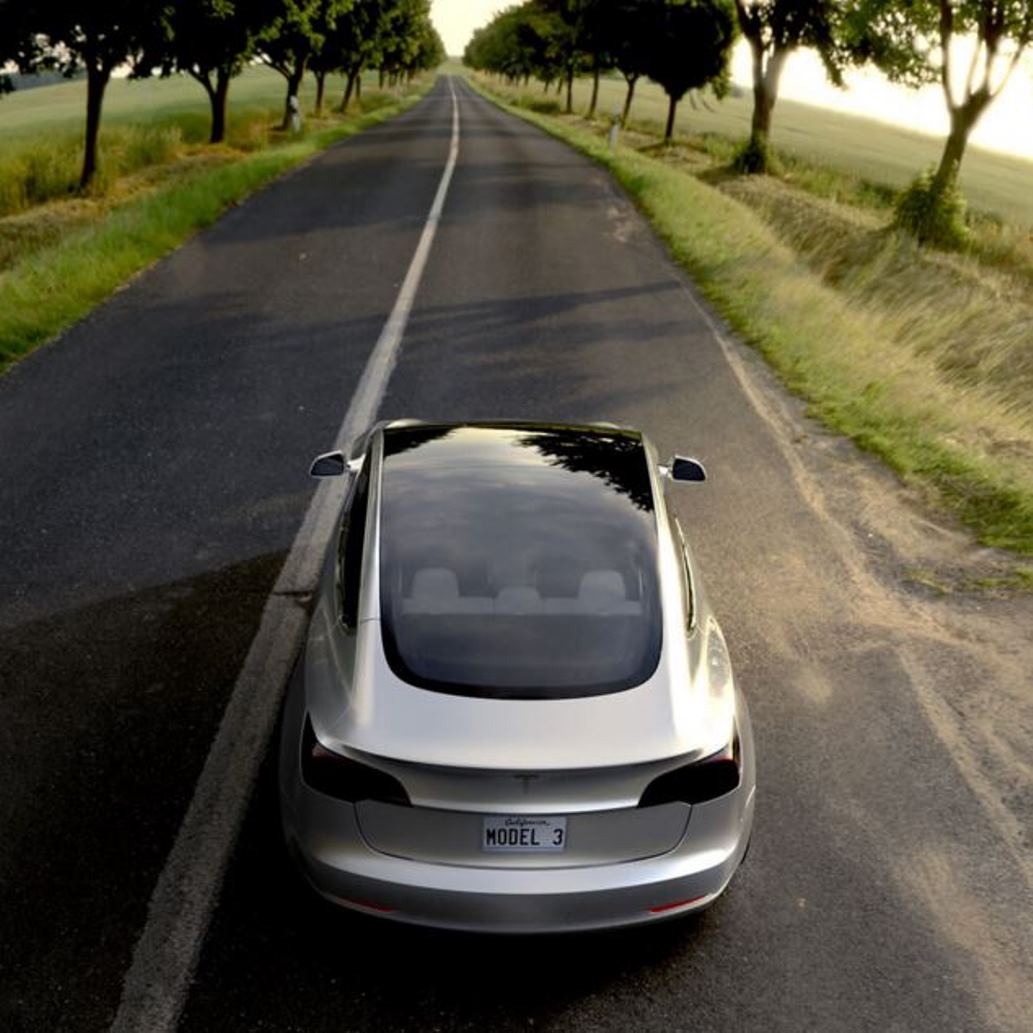Cars and Drivers
What the Tesla Model 3 Has Against the Toyota Prius and Chevy Bolt

Published:
Last Updated:

The auto world could not help but notice the public response to the launch of the Tesla Motors Corp. (NASDAQ: TSLA) Model 3 late last month. Usually those around-the-block customer queues are associated with the latest iPhone costing a few hundred bucks and not a car costing dozens of thousands of dollars that won’t be available for a couple of years.
General Motors Corp. (NYSE: GM) introduced its Chevy Bolt, another all-electric vehicle (EV), in January to a lot less fanfare, even though the vehicle itself is quite comparable in price and specifications to the Model 3. Both offer a driving range of more than 200 miles on a single battery charge and both cost about the same: the base-model Bolt lists for an estimated $37,500 and the base Model 3 for $35,000. Both are equally eligible for the $7,500 federal tax credit for alternative energy vehicles.
So why did the Model 3 take north of 325,000 pre-orders for a car that won’t be available until 2018 and GM take exactly zero? One reason is buzz. Tesla’s got it and GM doesn’t.
The way the two companies sell cars is different, and that may be more important. GM cars must be sold through dealerships under franchise laws in every state. Tesla has no such limitation, which has worked against it in the past but serves it well in the marketing buzz department.
Every pre-order for a Model 3 also required a $1,000 refundable deposit. Don’t expect GM ever to try that. One might even argue that GM’s Bolt helps validate Tesla’s all-electric strategy. And that strategy will get another boost later this year when Hyundai introduces its 2017 Ioniq, an EV that is expected to compete on price with the Bolt and the Model 3, but with a driving range of around 100 miles, similar to the Nissan Leaf EV.
Toyota Motor Corp. (NYSE: TM) just introduced an upgrade to its Prius plug-in hybrid electric vehicle last month, the Prius Prime. The car is not really a competitor to the Bolt or the Model 3 in that its electric range, even though doubled in the new model, is a mere 22 miles. But coupled with its gasoline-powered engine the car gets a chart-topping 120 miles per gallon equivalent fuel economy rating.
At one time that might have been enough to gain share in the non-internal combustion engine vehicle market, but that is probably no longer the case. The Prime’s MSRP is around $25,000 and it is expected to reach dealers late this fall.
Toyota also introduced its Mirai fuel cell-powered car in late 2015, but it is for sale in the United States only in California, and its MSRP is around $58,000. As of late last month, Toyota had managed to distribute just 100 cars of the 300 that were pre-ordered. A tankful of hydrogen fuel will take the car about 300 miles at a current cost of $40 to $50 per tankful.
It’s pretty safe to declare that Tesla has won the beauty contest. GM has a genuine competitor, though, but in order to win the top prize it needs to fire up dealers and salespeople with incentives, make sure there is enough product to meet demand, and really get behind the Bolt with some smart marketing.
Tesla delivered nearly 15,000 vehicles worldwide in the first quarter of 2016, and GM sold nearly 684,000 in the United States alone. Tesla’s market cap Tuesday morning was about $32.75 billion, compared with GM’s $45.65 billion. Those numbers say that the future is more valuable than the past. GM will need to ante up to play with the little guy.
Thank you for reading! Have some feedback for us?
Contact the 24/7 Wall St. editorial team.